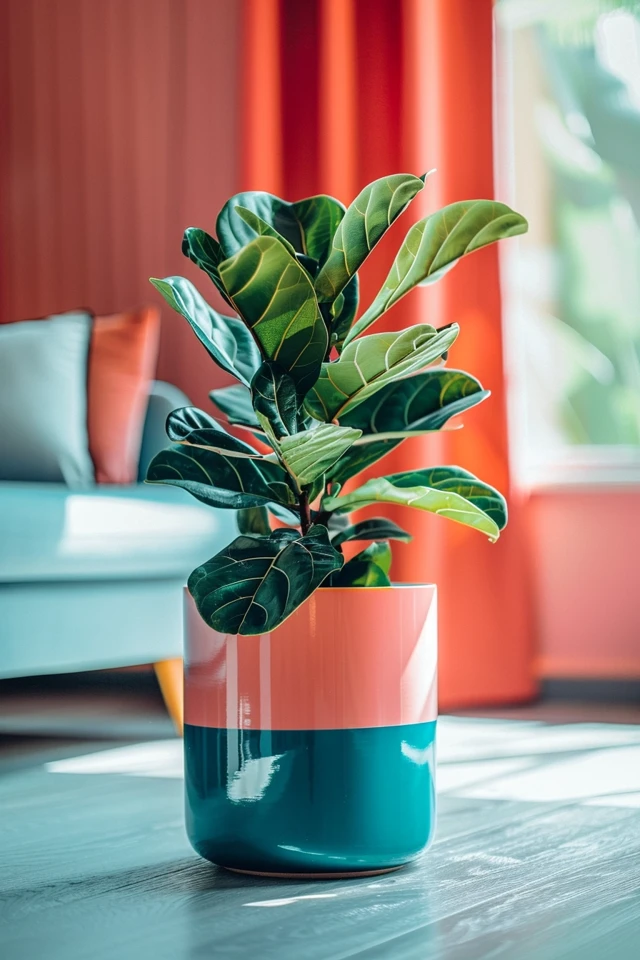If you have a struggling fiddle leaf fig plant, don’t give up hope! With the right care and attention, it is possible to revive and save your cherished plant. Many gardeners have successfully rescued their fiddle leaf figs from the brink of death. By following some key tips and techniques, you can give your plant the best chance of recovery and bring it back to health. Let’s explore some of the methods and strategies you can employ to save your fiddle leaf fig.
Key Takeaways:
- Pruning is an essential step in saving a struggling fiddle leaf fig. Remove dead or damaged leaves and stems to prevent them from draining resources from the rest of the plant.
- Notching and pinching are useful techniques to encourage branch growth and shape the tree. Notching involves making small cuts above nodes on the trunk to promote branching, while pinching stimulates branch growth by cutting off the newest growth on top of the tree.
- Common issues such as mildew, spider mites, mealy bugs, and root rot can be addressed by using neem oil-based sprays, manually removing pests, or repotting the plant in fresh soil with better drainage.
- Reviving a fiddle leaf fig requires patience, care, and understanding of the plant’s needs. Monitor the plant closely, provide appropriate watering, light, and humidity to give it the best chance of recovery.
- By following this rescue guide, you can give your fiddle leaf fig a second chance at life and create a thriving indoor plant for your home.

Pruning and Care Tips
When it comes to saving a struggling fiddle leaf fig, one of the first steps is pruning. It’s essential to remove any dead or damaged leaves and stems, as they can drain valuable resources from the rest of the plant. Pruning not only helps to maintain the overall health of your fiddle leaf fig but also allows you to shape the tree and redirect its energy for new growth.
Another beneficial technique for fiddle leaf fig care is notching. Notching involves making small cuts just above the nodes on the trunk. By doing so, you can promote branching and encourage new growth. This technique is especially useful if you want your fiddle leaf fig to have a fuller appearance.
Pinching is another method that can help you control the shape of the tree and promote lateral branch growth. To practice pinching, simply cut off the newest growth on top of the tree. This will stimulate the growth of branches from lower nodes and create a bushier and more compact form.
Remember to use clean and sharp pruning shears when cutting your fiddle leaf fig. This will minimize damage and promote faster healing of the tree.
By including regular pruning and implementing techniques like notching and pinching, you can optimize the growth and appearance of your fiddle leaf fig, helping it to thrive and flourish.

Troubleshooting Common Issues
Fiddle leaf figs can encounter several problems, including mildew, spider mites, mealy bugs, and root rot. It’s essential to address these issues promptly to ensure the plant’s health and vitality.
Combatting Mildew
If you notice powdery white spots on your fiddle leaf fig’s leaves, it may be suffering from mildew. To combat mildew, you can use neem oil-based sprays or create a mixture of baking soda and water. Apply the solution to the plant’s leaves, ensuring thorough coverage. Regular treatment can help eliminate mildew and prevent its recurrence.
Treating Spider Mites and Mealy Bugs
Spider mites and mealy bugs are common pests that can infest fiddle leaf figs. These tiny insects can cause leaf damage and hinder the plant’s growth. To treat spider mites and mealy bugs, manually remove them from the leaves using a soft cloth or cotton swab dipped in rubbing alcohol. Alternatively, you can use neem oil, a natural insecticide, to kill and repel these pests. Apply the neem oil as directed on the product label.
Addressing Root Rot
Root rot is a serious issue that can result from overwatering or poor drainage. To determine if your plant has root rot, carefully examine the roots. Healthy roots should be firm and white, while rotting roots will appear soggy, brown, or mushy. If root rot is present, it’s crucial to repot the fiddle leaf fig in fresh soil with improved drainage. Gently remove the affected roots and trim away any unhealthy portions. Place the plant in a well-draining pot and ensure proper watering practices moving forward.
Throughout the troubleshooting process, closely monitor your fiddle leaf fig for any signs of improvement or further issues. With proper care and timely intervention, you can mitigate these common problems and promote the overall well-being of your beloved plant.

Conclusion
Saving a struggling fiddle leaf fig requires patience, care, and understanding of the plant’s needs. By pruning, troubleshooting common issues, and providing the right conditions, you can revive and rescue your fiddle leaf fig.
Remember to monitor the plant closely, watering it appropriately, and providing adequate light and humidity. With dedication and proper care, your fiddle leaf fig can bounce back to life and thrive in your home.
Don’t give up on your plant – follow this rescue guide and give your fiddle leaf fig the second chance it deserves.

